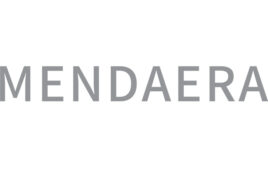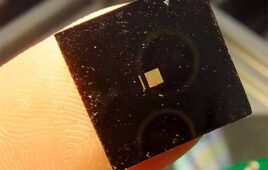These 10 medtech companies have spent the largest share of their annual sales on R&D, according to Medical Design & Outsourcing‘s annual Big 100. Here’s a look at the research-related news each medical device developer accomplished in 2022.

The Big 100: The world’s largest medical device companies
Each year, Medical Design & Outsourcing ranks the world’s largest 100 medical device companies based on annual revenue.
As an indicator of how well the industry is performing, we also compile and calculate R&D spending figures. Our latest analysis found medtech sales set a new record high and R&D spending accelerated despite economic headwinds.
Annual R&D spending at large medical device companies grew more than $1.1 billion — or 5.1% — to $23.4 billion, according to the most recent data available in our Big 100 analysis.
Five companies in the Big 100 spent more than 20% of their revenue on R&D, and the top 10 spent more than 15%. Click through the tabs below to see how much money each company reported spending on research and the news that came out of that spending.
10. Abiomed
R&D spending: $163,403,000
Percentage of revenue: 15.8%
2022 Big 100 rank: 68
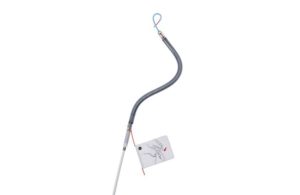
Abiomed’s Impella RP with Smart Assist [Image courtesy of Abiomed]
Here are some of Abiomed’s research-driven news in 2022:
> First implants of Impella Bridge-to-Recovery (BTR)
In April 2022, Abiomed announced the first implants of its Impella Bridge-to-Recovery (BTR) as part of an early feasibility study. Impella BTR is forward-flow heart pump implanted through the axillary artery and placed in the left ventricle. The company designed the implant to pump more than six liters of blood per minute. It is less invasive than some left ventricle assist devices (LVADs) and can allow patients with chronic heart failure to have a longer-term minimally invasive heart pump option.
> FDA approves new research around Abiomed Impella heart pumps
Abiomed’s heart pumps excelled in the second half of the 2022 calendar year. The FDA approved clinical research into using Impella heart pumps in severe heart attack patients with cardiogenic shock in September. The FDA approved the on-label Recover IV randomized controlled trial involving acute myocardial infarction (AMI) cardiogenic shock patients. The two-arm trial will assess whether Impella support before percutaneous coronary intervention is superior to PCI without Impella.
> Impella low-profile sheath wins FDA clearance
The Impella low-profile sheath won FDA 510(k) clearance in October. The sheath maintains the same inner diameter as the existing 14 French (Fr) sheath used for Impella CP placement. However, the new sheath reduces the outer diameter by nearly 2 Fr. The sheath’s smaller size and other technological advancements facilitate easier Impella insertion and removal to help reduce procedural steps and help improve outcomes, according to the company.
> FDA approves Abiomed Impella RP Flex with SmartAssist for treating right heart failure
Also in October, FDA granted pre-market approval (PMA) to the Impella RP Flex with SmartAssist. Abiomed designed the Impella RP Flex with SmartAssist to treat right heart failure for up to 14 days. The FDA indicated Impella RP Flex with SmartAssist for providing temporary right ventricular support for up to 14 days in patients with a body surface area of 1.5 m2 or larger. The device is implanted into the internal jugular vein (IJV) to enable patient mobility. The heart pump has dual-sensor technology for optimizing patient management.
> FDA tightens indications for Abiomed Impella RP system
Abiomed announced in December the first three patients in the world were treated with Impella RP Flex with SmartAssist. Health providers at Hackensack University Medical Center/Hackensack Meridian Health in New Jersey and Kingwood Medical Center in Kingwood, Texas successfully weaned all three patients off the Impella support. Two had returned home with their native heart at the time.
> Abiomed wins FDA nod for Impella ECP pivotal heart pump trial
Also in December, the FDA approved the version of Impella ECP for its pivotal trial. Abiomed enrolled the first two patients in its trial following approval. The single-arm, prospective, multi-center trial centers around Impella ECP support. Patients either receive the heart pump during elective or urgent high-risk percutaneous coronary intervention (PCI). It evaluates the rate of major adverse cardiovascular and cerebrovascular events (MACCE) in adult patients.
9. Edwards Lifesciences
R&D spending: $903,100,000
Percentage of revenue: 17.3%
2022 Big 100 rank: 24
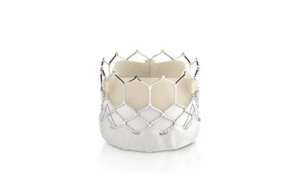
The Edwards Lifesciences Sapien 3 transcatheter pulmonic heart valve [Image courtesy of Edwards Lifesciences]
Here are some of the research news stories that drove Edwards Lifesciences’ R&D expenditures in the last year:
> FDA approves Edwards Lifesciences’ tissue-based mitral valve replacement
In March 2022, Edwards Lifesciences received FDA approval for its Mitris Resilia tissue valve replacement system. Edwards designed the Mitris Resilia valve with a saddle-shaped sewing cuff that mimics the asymmetric shape of the native mitral valve. It has a low-profile frame that avoids obstructions of the left ventricular outflow tract by stent posts and is visible under fluoroscopy. Edwards has studied Resilia in two pre-market clinical trials, combining outcomes for a total of 904 patients and more than 3,800 patient-years of follow-up that support the tissue replacement platform.
> Edwards launches Sapien 3 Ultra Resilia heart valve following FDA approval
Edwards Lifesciences in September launched its next-generation Sapien 3 Ultra Resilia transcatheter heart valve following FDA approval. It uses the company’s Resilia tissue technology in the transcatheter aortic valve repair (TAVR) device. The tissue technology in the device has enhanced calcium-blocking properties and dry tissue packaging conditions that facilitate ease of use, according to the company. It demonstrated freedom from structural valve deterioration at five years.
> Edwards wins FDA approval for Pascal Precision transcatheter valve repair system
Also in September, Edwards won FDA approval for its Pascal Precision system for patients with degenerative mitral regurgitation. The company designed the device for precision transcatheter edge-to-edge repair for heart valves. It has independent grasping, atraumatic clasp and closure and the ability to elongate to enable safe and effective treatment for patients with DMR. An intuitive catheter and handle improves maneuverability and stability for precise navigation and implant delivery.
> Edwards TEER therapy proves safe and effective in head-to-head trial with Abbott MitraClip
Data from a head-to-head trial with Abbott MitraClip confirmed Edwards’ transcatheter edge-to-edge repair (TEER) as safe and effective. CLASP IID compared Edwards’ Pascal system and Abbott’s MitraClip system and the study determined that the two contemporary TEER therapies are safe and effective in patients with degenerative mitral regurgitation (DMR). In the trial, Pascal demonstrated a low composite major adverse event rate of 3.4 percent at 30 days. It also produced significant and sustained mitral regurgitation reduction, as 97.7% of patients achieved mitral regurgitation of grade 2 or less at six months.
> Edwards announces positive results for Evoque valve replacement system
In November, Edwards announced positive one-year results from the TRISCEND study of the company’s Evoque valve replacement system. TRISCEND evaluated the Edwards Evoque system and demonstrated survival of 90.1% and freedom from heart failure hospitalization at 88.4%. Additionally, subjects showed significant and sustained TR reduction with 97.6% of patients demonstrating mild or trace TR. Evoque also significantly improved functionality and quality of life outcomes. Edwards reported 93% of patients in NYHA Class I or II compared to 26% at baseline. The company said it saw a 26-point increase in KCCQ score over baseline.
8. AtriCure
R&D spending: $48,506,000
Percentage of revenue: 17.7%
2022 Big 100 rank: 97
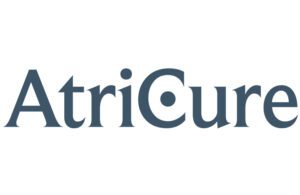 Mason, Ohio-based AtriCure specializes in treating atrial fibrillation.
Mason, Ohio-based AtriCure specializes in treating atrial fibrillation.
These stories stemmed from AtriCure’s R&D expenditures:
> AtriCure launches clamp for cardiac tissue ablation
In April 2022, AtriCure won FDA 510(k) clearance for its EnCompass Clamp for ablation of cardiac tissue. The device is indicated for use during cardiac surgery to make concomitant surgical ablations more efficient. The device has parallel closure, uniform pressure and custom power using Synergy radiofrequency (RF). EnCompass Clamp allows for easier placement using a magnetic guide, enabling more efficient procedures by minimizing tissue dissection.
> AtriCure treats first patient in Isolator Synergy clamp trial
AtriCure in June treated the first patient in its HEAL-IST clinical trial. The trial is evaluating the AtriCure Isolator Synergy clamp for treating drug-refractory patients diagnosed with inappropriate sinus tachycardia (IST). AtriCure’s Isolator Synergy clamp is the first and only surgical ablation device offered with FDA approval for the treatment of atrial fibrillation (AFib) and the only device — either catheter or surgical — to be approved for the treatment of persistent and long-standing persistent AFib, according to the company.
7. LivaNova
R&D spending: $183,414,000
Percentage of revenue: 17.7%
2022 Big 100 rank: 67
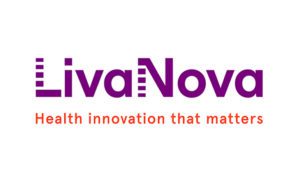 LivaNova sold its heart valve business to Gyrus Capital in the second half of fiscal 2021. Since then, the London-based company has focused on patient monitoring and respiratory devices.
LivaNova sold its heart valve business to Gyrus Capital in the second half of fiscal 2021. Since then, the London-based company has focused on patient monitoring and respiratory devices.
Here are some of the top news from LivaNova in 2022:
> LivaNova implants first patient in Osprey obstructive sleep apnea study
LivaNova implanted its first patient in a clinical study of its Aura6000 system in February 2022. The company designed the device to maintain muscle tone of the tongue and upper airway to eliminate or significantly reduce airway obstruction and resulting sleep apnea. The hypoglossal neurostimulator system includes a programmable and rechargeable implantable pulse generator (IPG) placed in a subcutaneous pocket near the patient’s clavicle during an outpatient procedure. The IPG generates mild stimulation that is delivered through leads to the hypoglossal nerve, stimulating the patient’s tongue during sleep to keep the airway open as an alternative to the traditional CPAP machine.
> LivaNova launches patient monitor for cardiopulmonary bypass procedures
In April, LivaNova commercially launched its Essenz patient monitor in the U.S. and Europe after having received FDA 510(k) clearance and the CE mark. The monitor uses a patient-tailored approach to improve efficiency and quality of care during cardiopulmonary bypass procedures. LivaNova designed the patient monitor to provide decision-making support for the perfusionist during the entire CPB procedure with compatibility with the LivaNova S5 heart-lung machine.
> LivaNova LifeSparc ACS pump cleared for extended use
The FDA cleared LivaNova’s LifeSparc advanced circulatory support (ACS) system for extended use in November 2022. The company designed the pump for extracorporeal membrane oxygenation (ECMO). It is centrifugal and can simplify ECMO procedures. The new FDA 510(k) clearance allowed the LifeSPARC system to be used for ECMO beyond six hours. Previous indications allowed the device to be used for up to six hours of use for cardiopulmonary bypass.
6. Inari Medical
R&D spending: $51,018,000
Percentage of revenue: 18.4%
2022 Big 100 rank: 96
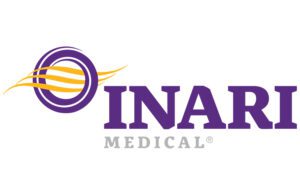 Inari Medical raised funds in early 2022 with an underwritten public offering worth up to $186.3 million. The company also promoted Chief Operating Officer Drew Hykes to CEO in August. Since then, the Irvine, California-based company has embarked on treatment options for deep vein thrombosis.
Inari Medical raised funds in early 2022 with an underwritten public offering worth up to $186.3 million. The company also promoted Chief Operating Officer Drew Hykes to CEO in August. Since then, the Irvine, California-based company has embarked on treatment options for deep vein thrombosis.
Inari Medical’s research news of 2022 included:
> Inari Medical launches trial to assess ClotTriever system in deep vein thrombosis
In August, Inari Medical announced a clinical trial for its ClotTriever system for iliofemoral deep vein thrombosis (DVT). The Defiance trial compares ClotTriever to anticoagulation only for patients with iliofemoral DVT. The device is an over-the-wire system that captures and removes large clot burden from big vessels. Patients can be treated in a single session and it eliminates the need for thrombolytics and ICU stays. ClotTriever is indicated for the non-surgical removal of thrombi and emboli from blood vessels and injection, infusion and aspiration of contrast media and other fluids into or from a blood vessel.
> Inari Medical reports positive outcomes from FlowTriever study
Inari Medical in September announced positive results in its FLASH registry evaluating the FlowTriever. The company designed its FlowTriever for device retrieval and aspiration. The system treats pulmonary embolism (PE). FlowTriever non-surgically removes clots from peripheral blood vessels. The registry evaluates real-world patient outcomes after treatment of PE with FlowTriever. It has a primary endpoint of major adverse events comprising device-related mortality or major bleeding within 48 hours and intraprocedural device or procedure-related acute events. That rate came in low at 1.8%. Patients experienced immediate hemodynamic and symptom improvement with a modest hospital resource burden. This is demonstrated by a minimal need for adjunctive therapy and a median post-procedure ICU stay of zero days. All-cause mortality registered low at 0.8% at 30 days.
5. Dexcom
R&D spending: $517,100,000
Percentage of revenue: 21.1%
2022 Big 100 rank: 45
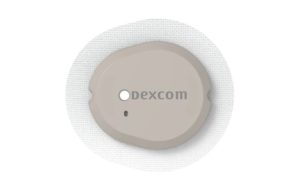
Dexcom’s G7 wearable [Image courtesy of Dexcom]
Here are the top stories from Dexcom in 2022:
> Dexcom says data shows next-gen G7 CGM provides accurate glucose readings
In February 2022, Dexcom published study results that demonstrated the accuracy offered by its next-generation G7 continuous glucose meter (CGM). The study demonstrated that G7 provides accurate glucose readings with a mean absolute relative difference (MARD) of 8.2% for adults wearing arm-placed sensors, highlighting strong accuracy regardless of diabetes type or treatment regimen. Previously shared G7 data aligned with this, as Dexcom has reported 8.2% MARD in adults and 8.1% MARD in pediatric patients. The next-generation platform also offers high responsiveness to changes in blood glucose to help users prevent over-treating or under-treating highs and lows.
> Dexcom wins FDA breakthrough nod for use of its CGM in hospitals
Dexcom received FDA breakthrough designation for using its CGM in a hospital setting in March. The Dexcom CGM uses a small, wearable sensor and transmitter to continuously measure and send glucose levels wirelessly to a smart device to provide real-time glucose data and eliminate the need for fingersticks. It also offers customizable alerts and alarms to make the patient aware of blood sugar levels and potentially avoid dangerous low and high blood sugar events.
> Dexcom wins CE mark for next-gen G7 CGM, will begin European launch within weeks
Dexcom announced in March that its G7 CGM won CE mark approval in Europe. It designed the next-generation CGM as an all-in-one wearable system that warms up in 30 minutes — compared to two hours with the previous generation G6 — and sends real-time glucose readings automatically to a compatible smart device or receiver with no fingersticks required. It is also smaller in size and has fewer components and improved ease of use compared to previous models. Regulatory approval in Europe covers the use of the next-generation G7 CGM for people with diabetes ages 2 and older, including pregnant women.
> Dexcom study shows strong accuracy for next-gen G7 CGM in pediatric T1D patients
In April, Dexcom published new data highlighting the accuracy of the company’s next-gen G7 CGM in children. The study evaluated the G7 CGM in children and adolescents with type 1 diabetes. Overall mean absolute relative difference (MARD) — a measure of accuracy — registered at 8.1% for arm-placed sensors, remaining in line with previous data that recorded MARD of 8.2% for adults and 8.1% MARD in pediatric patients. MARD registered at 9% for abdomen-placed sensors in the age 7-17 group, while the 2-6 group provided an overall MARD of 9.3%. Additionally, the study demonstrated that the 12-hour extended grace period for the G7 provides consistently reliable and accurate readings, while no clinically significant difference in accuracy when comparing arm-placed sensors and abdomen-placed sensors.
> Dexcom G7 launches in a handful of countries outside the U.S.
Dexcom’s G7 CGM was made available in a number of countries outside the U.S. in October. G7 launched in the U.K., Ireland, Germany, Austria and Hong Kong. Availability covered people with diabetes aged two years and older. The launch marked the first major milestone in the availability of the CGM.
> FDA clears Dexcom G7 next-gen CGM
In December, the FDA cleared Dexcom’s G7 CGM system. The new 510(k) covered people with all types of diabetes ages 2 and older.
4. Shockwave Medical
R&D spending: $50,544,000
Percentage of revenue: 21.3%
2022 Big 100 rank: 99
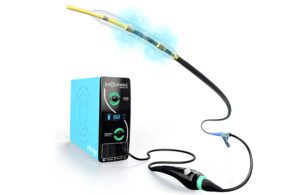
Shockwave Medical’s Coronary Intravascular Lithotripsy C2 [Image courtesy of Shockwave Medical]
Research news from Shockwave Medical in 2022:
> Shockwave Medical wins Japanese regulatory approval for Coronary IVL catheter
In March 2022, Shockwave Medical won regulatory approval in Japanese for its Shockwave C2 coronary IVL catheter. The approval was supported by 30-day results from the Disrupt CAD IV study that assessed the safety and effectiveness of IVL in patients. Shockwave C2 coronary IVL catheter received the CE mark in 2018 and premarket approval from the FDA in 2021.
> Shockwave Medical globally launches new peripheral intravascular lithotripsy catheter
Shockwave Medical launched its Shockwave M5+ peripheral IVL catheter across the globe in March. The catheter is specifically designed to decrease IVL treatment time, provide alternative access options and expand IVL therapy to patients with larger vessel sizes. It has a catheter length of 135 cm and a larger 8 mm size. Shockwave Medical designed the catheter for difficult-to-treat calcified lesions in the peripheral arterial system of the lower extremities, including iliac, femoral, ilio-femoral, popliteal, infra-popliteal and renal arteries.
> Shockwave Medical announces positive study results for coronary IVL
Shockwave Medical in May announced positive one-year results for its Disrupt CAD clinical program. A pooled analysis of the Disrupt CAD III & IV studies showed that IVL was equally safe and effective in men and women. The primary effectiveness endpoint of procedural success for women and men was similar, as well as the primary safety endpoint of 30-day MACE for women and men. There were also consistently low rates of post-IVL serious angiographic complications in women and men.
> Shockwave’s IVL maintains superiority to angioplasty in calcified peripheral disease
Shockwave Medical announced long-term data that showed its intravascular lithotripsy (IVL) had “excellent long-term outcomes” after two years. IVL at 30 days demonstrated superiority over percutaneous transluminal angioplasty in the primary endpoint analysis.
> Shockwave initiates first all-female coronary IVL study
Shockwave announced in September that it initiated its first-ever prospective coronary intervention study with all female patients. The study would determine whether the positive results from earlier coronary IVL studies with the Shockwave C2 Coronary IVL catheter had similar safety outcomes for both sexes.
3. Glaukos
R&D spending: $100,999,000
Percentage of revenue: 34.4%
2022 Big 100 rank: 95
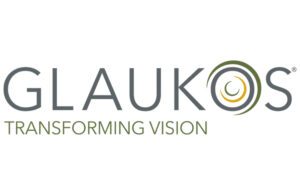 Glaukos focuses on treating ophthalmic diseases. The San Clemente, California-based company has medical device and pharmaceutical operations.
Glaukos focuses on treating ophthalmic diseases. The San Clemente, California-based company has medical device and pharmaceutical operations.
Here is some Glaukos research news we covered in 2022:
Glaukos announced in January 2022 that it received FDA 510(k) clearance for its iPrime viscodelivery system. Glaukos designed the iPrime viscodelivery system as a sterile, single-use, minimally invasive device for delivering viscoelastic fluid during ophthalmic surgery.
> Phase 3 trial data support Glaukos iDose eye drop alternative
In September, Glaukos announced positive outcomes from two Phase 3 pivotal trials for its iDose TR system. iDose TR contains a novel formulation of travoprost, a prostaglandin analog used to reduce intraocular pressure (IOP). Glaukos designed it to continuously release therapeutic medication levels for at least one year. Once all travoprost is released, iDose TR is removed and replaced with an implant, potentially offering an alternative to daily eye drop treatment. Glaukos announced topline data for two separate Phase 3 pivotal trials of iDose TR. The data demonstrated the achievement of pre-specified primary efficacy endpoints through three months in both trials. It also demonstrated excellent tolerability and a favorable safety profile through 12 months. The fast- and slow-release iDose TR arms in both trials showed non-inferiority to the active comparator arm (twice-daily topical timolol ophthalmic solution, 0.5%) through 3 months. Additionally, 93% of slow-release subjects remained well-controlled on the same or fewer IOP-lowering topical medications at 12 months compared to screening after a single iDose TR administration. This compares to 67% of timolol control subjects in both trials.
2. Novocure
R&D spending: $201,303,000
Percentage of revenue: 37.6%
2022 Big 100 rank: 84
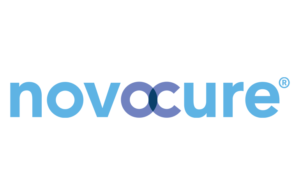 Novocure is an oncology company specializing in developing therapies for solid tumors. The Root, Switzerland-based company’s tumor treating fields technology is FDA-approved for recurrent and newly-diagnosed glioblastoma and mesothelioma.
Novocure is an oncology company specializing in developing therapies for solid tumors. The Root, Switzerland-based company’s tumor treating fields technology is FDA-approved for recurrent and newly-diagnosed glioblastoma and mesothelioma.
Novocure had several research-driven projects in 2022:
> Novocure Tumor Treating Fields activates immune response, new data reports
Study results in February showed Novocure’s Tumor Treating Fields mediated cell disruption and activated the immune system to trigger an anti-tumor cell response. The research showed the device could be effectively used with existing immunotherapy approaches in the treatment of solid tumors with limited systemic toxicity. Tumor Treating Fields also induced a pro-inflammatory and broader immunological effect on tumor cells.
> Novocure announces clinical collaboration with Merck to evaluate Tumor Treat Fields with Keytruda
Novocure in May announced a clinical collaboration with Merck to study the use of Tumor Treating Fields concomitant with Merck’s anti-PD-1 Keytruda for the treatment of patients with newly diagnosed glioblastoma. The following month, Novocure announced the first patients were enrolled in the study.
Novocure in June announced its pilot study evaluating Tumor Treating Fields together with standard-of-care chemotherapy met its primary endpoint for first-line treatment of gastric cancer. The research showed that there was an objective response rate with supportive signals across secondary endpoints. TTFields therapy was well tolerated, with no increase in the systemic toxicity of the Xelox chemotherapy regiment or the combination regimen, and no high-grade skin toxicities were reported.
> Novocure wins CE mark for new flex array
In November, Novocure won CE mark approval for its polymer-based transducer array for its Tumor Treating Fields treatment. Called the flex array, it has more efficient delivery and greater comfort for patients with glioblastoma. The arrays are 50% thinner and more than 30% lighter compared to current commercial arrays.
> Novocure’s Optune wins regulatory approval in Canada
Also in November, Novocure received Health Canada approval for its Optune device. The company designed Optune to treat newly diagnosed and recurrent glioblastoma. It works by creating Tumor Treating Fields to disrupt cancer cell division. The small, portable device weighs about 2.7 pounds and allows for continuous treatment anywhere.
1. MicroPort
R&D spending: $297,800,000
Percentage of revenue: 38.2%
2022 Big 100 rank: 77
 MicroPort was a new addition to the 2022 Big 100 list. The Shanghai, China-based company develops medical devices like drug-eluting stents for numerous applications, including cardiovascular, orthopedics, cardiac rhythm management, electrophysiology, endovascular, neurovascular, surgical robots and more.
MicroPort was a new addition to the 2022 Big 100 list. The Shanghai, China-based company develops medical devices like drug-eluting stents for numerous applications, including cardiovascular, orthopedics, cardiac rhythm management, electrophysiology, endovascular, neurovascular, surgical robots and more.
Here is some of the research news MicroPort shared in 2022:
> MicroPort’s MedBot robotic-assisted trans-bronchial navigation system used in first clinical trial
In April, MicroPort’s MedBot robotic-assisted, trans-bronchial navigation system was used in its first clinical trial in China. The device is being used for lung biopsies of nodules. The domestic bronchial robot is one of the first applications of non-invasive natural orifice transluminal surgeries using a homegrown surgical robot, according to the company. The trans-bronchial surgical robot provides an integrated solution for the intelligent treatment of lung diseases by integrating the entire process of intelligent assistance for the procedure, including preoperative planning, respiratory compensation, and intraoperative surgical guidance. It has an ultra-soft, ultra-slim, snake-like robotic catheter that travels into narrow lesions through a natural orifice without causing surface trauma.
> MicroPort NeuroTech completes first implant of Numen coil embolization system in the U.S.
MicroPort’s Neurotech completed the first implants of its Numen coil embolization system in the U.S. in June. Numen are thin and soft platinum tungsten alloy wires deployed through a microcatheter when placed in the aneurysm sac. It allows for stable framing, smooth filling and finishing, and has superb conformability to shapes of aneurysms.
> MicroPort wins CE mark approval for Invicta defibrillation leads
In July, MicroPort’s Cardio Rhythm Management won CE mark approval for its Invicta family of defibrillation leads. Invicta is intended for connection to implantable cardioverter defibrillators and cardiac resynchronization therapy defibrillators. It is placed into the heart’s right ventricle through the central veins and, once implanted, continuously senses electrical signals from the heart and delivers pacing therapy if it is too slow or defibrillation shocks during ventricular tachyarrhythmia.
> MicroPort’s orthopedic surgical robot wins CE mark
MicroPort’s MedBot SkyWalker orthopedic surgical robot won CE mark approval in Europe in December. The company designed the surgical robot to assist surgeons in joint replacement surgery. Its robotic arm is guided by CT images and is indicated for total knee arthroplasty.
For our full rankings of Big 100 R&D spend by total spending and spending as a percentage of revenue, read our latest Big 100 report in Medical Design & Outsourcing.


